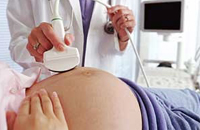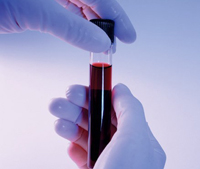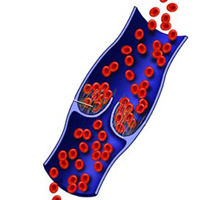The examination and treatment of patients suffering from antiphospholipid syndrome is still needed before the occurrence of pregnancy. During pregnancy, diagnosis is carried out, which allows you to estimate the functional state of the fetus and identify signs of hypoxia.
Content
Pregnancy under antiphospholipid syndrome
 Survey and drug training for patients with antiphospholipid syndrome should be started before pregnancy. At the same time, patient complaints are carefully analyzed for the identification of possible signs of the disease. Conduct laboratory studies to detect antibodies to cardiolipine and lupus anticoagulant. When they identify, research is repeated after 6-8 weeks. At the same time, a survey is carried out to identify concomitant diseases, and if necessary, their treatment. In the presence of repeated positive tests for the presence of antibodies to cardiolipin and a lupus anticoagulant begin the treatment of antiphospholipid syndrome with individual selection of drugs.
Survey and drug training for patients with antiphospholipid syndrome should be started before pregnancy. At the same time, patient complaints are carefully analyzed for the identification of possible signs of the disease. Conduct laboratory studies to detect antibodies to cardiolipine and lupus anticoagulant. When they identify, research is repeated after 6-8 weeks. At the same time, a survey is carried out to identify concomitant diseases, and if necessary, their treatment. In the presence of repeated positive tests for the presence of antibodies to cardiolipin and a lupus anticoagulant begin the treatment of antiphospholipid syndrome with individual selection of drugs.
With the occurrence of pregnancy, with its early terms, controls the nature of the course of the disease using the appropriate laboratory tests and the necessary treatment is carried out.
Using ultrasound, control the growth rates of the fetus with an interval of 3-4 weeks, and also evaluate the functional state of the fetoplacementar system. Special diagnostic value has ultrasound dopplerometry, which is carried out from 20 weeks with an interval of 3-4 weeks before delivery. Dopplerometry Allows you to diagnose a decrease in fetoplacentar and populacentar blood flow and allows you to evaluate the effectiveness of the therapy.
Data cardiotokography after 32 weeks of pregnancy, also allow to evaluate the functional state of the fetus. In childbirth, careful cardiomonitorial control is carried out due to the presence of chronic hypoxia of the fetus, as well as the increased risk of detachment of a normally located placenta, the development of acute hypoxia of the fetus against the background of chronic oxygen starvation. It is advisable to determine the condition of the blood coagulation system immediately before childbirth and in childbirth.
Of particular importance acquires the observation of the state of the pledges, since it is in the postpartum period that the risk of thromboembolic complications increases.
Steroid therapy during pregnancy
Steroid therapy (the use of glucocorticosteroids - prednisone) continues within 2 weeks with gradual cancellation. It is advisable to monitor the hemostasis system for the 3rd and 5th day after delivery. With pronounced hypercoagulation, a short rate of heparin is needed at 10,000-15,000 units per day subcutaneously. Patients who are prescribed anticoagulants and antiagrants, lactation suppress.
Patients who have been diagnosed with antiphospholipid syndrome during pregnancy are subject to careful observation and monitoring of the condition of blood coagulation system due to the risk of disease progression.
Thus, timely diagnosis, preparation and rational pregnancy in patients with antiphospholipid syndrome using adequate treatment reduces the risk of developing complications during pregnancy and in the postpartum period.









